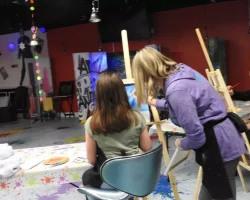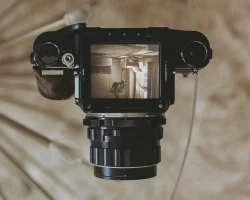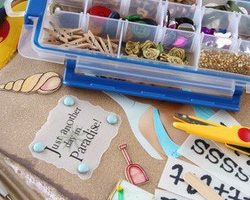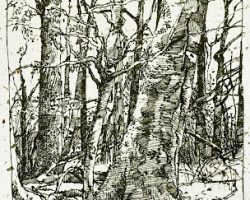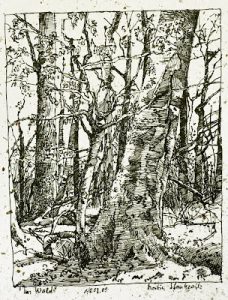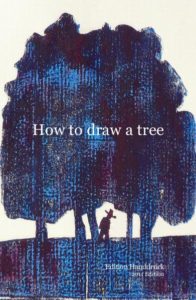How to Become a Comedian
So you want to become a comedian?
Well, it’s not easy. Many people have tried and failed. But don’t be discouraged, that doesn’t mean you don’t have a shot.
The fact that you are here searching on how to become a comedian shows that you are serious about learning from others. Successful comedians are your best source for information to help you pursue stand up comedy, either as an amatuer or a professional.
Becoming a Comedian
Killer Comedy Jokes Needed
So, people around you find you funny and witty. But is this enough of a reason for you to become a comedian? Well, maybe. Being funny and witty could be a start of a successful career as a comedian. But it is important to note that becoming a comedian is a serious business. To do stand up comedy in front of an audience, you need to have good self-confidence and a strong stomach. Additionally, you need to be ready to deliver explosive stand up comedy jokes. Of course, you wouldn’t want your first standup comedy act to be a bust, right? So, to avoid any embarrassment, you will need to come up with some killer stand up comedy jokes when learning how to become a comedian.
Tips on making stand up comedy jokes.
There is a common misconception that standup comedians do nothing but tell little jokes or hilarious stories to drunken audience at night. It’s a lot more complex than that! Standup comedians spend hours in making stand up comedy jokes and perfecting their routine. They invest time and effort in formulating stand up comedy jokes that will leave the audience laughing out loud and never have dull moments.
To help you come up with explosive stand up comedy jokes, here are some tips you need to know:
1. Follow the formula – Joke building follows two basic formuals – the setup, which explains the joke and the punch line, which construes the delivery of the stand up comedy jokes. For beginners, it is safe to stick to the formula to get better laughs.
2. Find a joke in everything – This is the secret to prevent embarrassing moments. Try hard to find the funny in everything and in every situation. The more you are creative in making stand up comedy jokes, the better you will get in making up jokes.
3. List your stand up comedy jokes – Jot down a list of hot jokes that you know will beef up your comedy act.
4. Observation stand up comedy jokes – By simply pointing out absurd and real funny things that happen every day and are part of everyday life, you can make people laugh.
5. Mimic stand up comedy jokes – You can mimic someone in a funny way. This will definitely add humor to your act. Make sure that the person you mimic is a well-known person so that everyone can relate to.
Beyond stand up comedy Jokes
In addition to these tips on enhancing your stand up comedy jokes, you also need to build up your comic vocabulary. Some terms you need to be familiar with are To Kill (to do really well), To bomb (to do really badly), Set up (the explanation part of a joke), and all other stand up comedy jokes term. Now that you have read this advice, you can now improve your stand up comedy jokes and start killing your audiences with your stand up routines. Master the tips and you are way to getting the fame as a pro stand up comedian.
Killer Comedy: Become a Great Comedian
If you happen to read good comedy books or have watched good killer theatre shows, skits, or films, then you know that there’s nothing more relaxing and medicating than a few good laughs. Yes, it is expected that comedy should be hilarious, but if you think that making killer comedy stories is simple, you are wrong! Good comedy is a serious business as it entails hard work, dedication, and most of all, excellent writing skills. The ability to create a real piece of killer comedy can be attributed to a moment of inspiration or a sudden light bulb moment. But putting that idea into the right words demands comedic skill.
In order to be effective, a killer comedy should instantly capture the emotion of the audience. Once this is done, expect it to get good laughs. As mentioned awhile ago, a lot of hard work should be put into it so as to put together a killer comedy piece that will leave your audience rolling in the aisles. Creating a killer comedy piece involves phrasing, reviewing, rephrasing, and then some polishing. This process goes on and on until a good killer comedy is produced. More than that, comedy writers also need to know what type of comedy they write the best.
Being a Killer Comedy Writer
Each comedy writer is unique. They have their own strengths and weaknesses thus, they should decide what type of killer comedy they should write and present. The kinds of killer comedy vary from one liner to lengthy ramble or also known as routine. A routine can be made up of various “gags” or it can have one theme. Sketches, on the other hand, are a type of killer comedy that are long and are packed with gags. Writers that write good sketches are much acclaimed than those who do not.
Since writing killer comedy is a tough job, it is always an edge for those writers with inherent talent for writing comedy pieces. This can be a good and fruitful occupation. All that is needed is focus, hard work, and mastering trade tricks. Aspiring killer comedy writer can learn and master the tricks of trade by simply observing expert comedians at work. By meticulously analyzing their works, they can easily grasp and learn the intricacies of comedy variations. Aside from that, another important thing that aspiring killer comedy writers should understand is the holistic concept of comedy. They will never be called noble writers without having the know-how about comedy.
Killer Comedy: Timing Matters
Killer comedy pieces are created by excellent comedy writers. Obviously, they are made and presented with the ability to amuse the audience while delivering a specific message. These are what professional comedy writers are known for. They have the ability to inject the right jokes at the right place and the right timing. This is what makes a killer comedy very appealing. Though a writer may be packed with jokes, but without delivering it on the right timing, all can be dull. Timing is a critical angle that comedy writers should work on. By mastering this aspect, they can make a difference to a good joke. To learn and acquire excellent comedy techniques, proven systems from the funniest pro comedians is the answer!
How to Be a Comedian Through Comedy Classes
Some people are born comedians. They usually are the jokester in the group, making funny jokes and leaving everybody in tears laughing. If most of your friends or family say that you are naturally funny and witty then why not try to make this as a profession? Consider taking comedy classes to bring your comedic talent to the next level. If you enjoy cracking jokes and making people laugh or if you know the value of comedy, you are a prime candidate for comedy classes. By enrolling in elite comedy classes, your natural comic abilities will improved and honed.
Being a stand-up comedian is no laughing matter! It is more than just making the people laugh, or simply retelling common jokes and wait for your friends and the people around you to chuckle. Comedy is more about putting the right jokes in the right place and in the right timing. Comedy classes will teach you the true essence of comedy. They will teach you how to be tenacious and cognizant about your comedy piece. The core function of comedy classes is to build-up your humorist talent. They will allow you to be knowledgeable about the stage, know how to write effective jokes, and develop holistic comic charm.
Be a pro standup comedian thru good comedy classes
For inborn comedians, undergoing comedy classes will not be a hard task. But for people who wanted to develop their comic skills, it can take years before hitting the big time. Taking up comedy classes and workshops will help you get started on a successful career as a stand-up comedian. These will get you up in front of an audience, create good jokes, and master the art of delivering jokes. More than that, comedy classes will teach you to write and structure jokes. Structuring techniques are important in making good jokes.
Most comedy classes offer performing opportunities for students. This is a good platform for students to exhibit and perform their comedy piece in front of an audience. This does not only provide an avenue for aspiring comedians to show what they have learned in comedy classes, but this is also a good opportunity to bring out what they got like spouting funny adlibs and delivering funny lines spontaneously while doing the entire standup comedy. Through good comedy classes, a great comedian can be spawned.
The advantages of taking comedy classes
While it is a fact that taking up comedy classes can be tough, on the contrary, they can be worthwhile. Through comedy classes, one can build up his or her personality. You yourself can create a unique comedy trademark that people will instinctively recognize. For beginners like you in comedy classes, it might be awhile before you can find your unique comic personality. One way to discover it is to test your comedy piece in front of the public and ask for feedbacks or reviews. After, you can tweak your stage presence until you have created the trademark you want to exude. Examples of famous comedians in the Hollywood that are popularly known for their distinctive comic personality are Chris Rock, Adam Sandler, Dave Chapelle, and many others. When people hear their names, their comic styles are instantly recalled.
Anyone interested in taking up comedy classes should seek a professional standup comedy class. There are a myriad of comedy class offered in the internet today and all you have to do is pick and enroll in a comedy class that suits your criteria as well as will bring out the best in you.
Refine Your Comedy Through a Comedy Class
Do you think you are hilarious or do your friends and family often tell you how funny you are? If yes, then you may benefit from taking a comedy class. Taking a comedy class will bring your comedic talent to the next level allowing you to try a stand-up act in front of an audience. If you dream of becoming a professional comedian, a comedy class is the way to achieve your desires. If you are good at making everybody laugh, then why not turn it into a career? Not only can you have a fruitful profession, but you are sharing what you love doing and making people laugh in the process.
Basically, a comedy class aims to provide a supportive environment where you can write, edit, and perform a comedy. Additionally, your comic skills will be honed and further develop. This will be successfully achieved thru a good comedy class that offers workshops where you will learn joke formats, performance techniques, how to deliver killer comedy and explosive jokes, write a comedy piece, and more. By learning a handful of this knowledge from a comedy class, see yourself soar as a professional and excellent stand-up comedian.
What you will learn from a comedy class?
So, imagine that you have enrolled in a comedy class and you have learned everything and almost every technique. It is imperative that you will think that you already have the guts to have your own show. But don’t be so ecstatic! Before this happens, you will still need tons of practice. Before taking your act on stage, first of all, focus on one goal and that is to make every person in the room laugh. In any comedy class, the first thing that you will be oriented about is how to observe and learn from the expert comedians. After this, your comedy class will encourage you to write your funniest material.
Once you have finished writing your comedy script, the next thing you need to do is practice your delivery. Here, you will implement everything that you have learned from your comedy class. The timing, your punch lines, intonation, voice volume, and adlibs will all come together now. By mastering your delivery, you will become more confident facing an audience and evade yourself from any embarrassment. This is the advantage of taking a comedy class. More than just the mere idea of making jokes and making the people laugh, taking comedy class is more about the techniques you need to have for a real exceptional and amusing stand-up comedy.
Comedy Class: Things to think about
Aspiring stand-up comedians should understand that being a pro is a serious business. If you want to pursue it as a career, take a head start by enrolling in a comedy class. Once you are in a good comedy class, make yourself ready as there is a long way to go. It is hard to earn applause and the pay is not as rewarding as the efforts thus make sure that you stay funny to reap the rewards. Know what makes people laugh and remember to take a comedy class so as you will make it big in no time.
